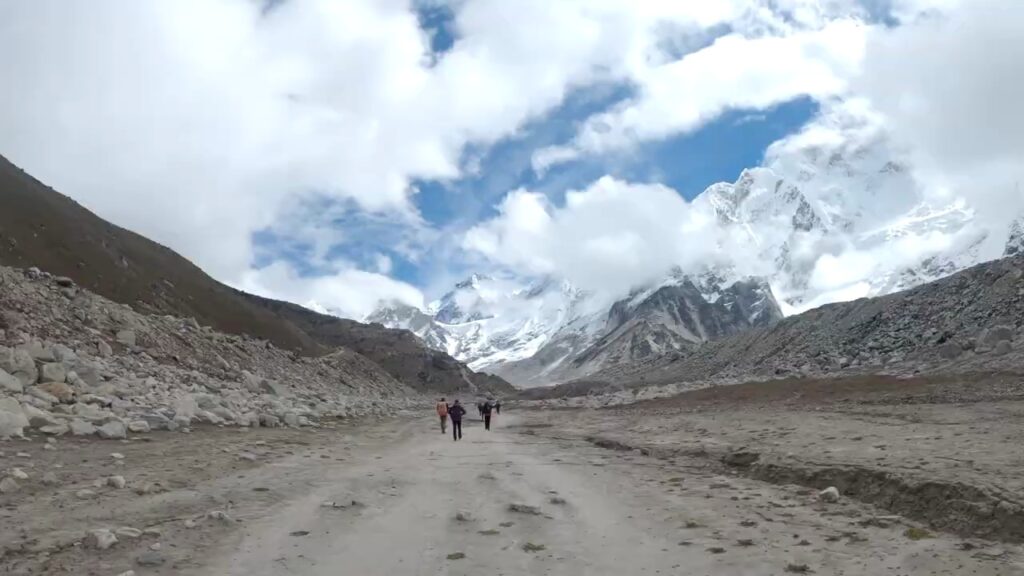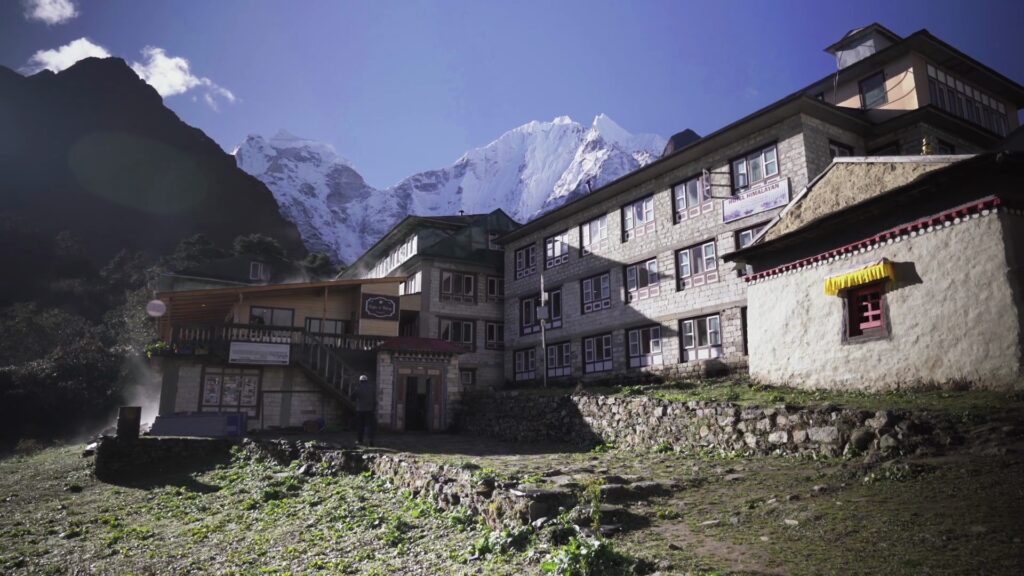Embarking on the Everest Base Camp Trek is a dream for many adventurers. This comprehensive guide will equip you with all the essential information to ensure a successful and memorable journey. From the bustling streets of Kathmandu to the serene landscapes of the Himalayas, let’s dive into the details.

Starting Point: Kathmandu
Exploring Kathmandu
Your adventure begins in the vibrant capital of Nepal, Kathmandu. With a population of 1.4 million, this city is a bustling hub of culture and chaos. Allocate a couple of days to explore its colorful streets before and after your trek.
Must-See Attractions in Kathmandu
Monkey Temple (Swayambhunath)
This ancient religious complex atop a hill in the Kathmandu Valley offers stunning views of the city and is home to hundreds of monkeys.

Durbar Square
A UNESCO World Heritage Site, this square is filled with ancient palaces, temples, and courtyards.

Burning Ghats
Located near the Bagmati River, these ghats are used for Hindu cremation ceremonies and offer a unique cultural experience.
Thamel District: The Backpacker’s Paradise
Thamel is the go-to place for trekkers and backpackers. Here, you’ll find a wide range of restaurants, bars, and shops selling everything from trekking gear to souvenirs. It’s also a great place to meet fellow travelers and exchange tips and stories.
Packing Essentials for the Everest Base Camp Trek
When it comes to packing, less is more. Our weight limits were 10kg for our main bags and 5kg for day packs, but this can vary depending on your trekking company or if you’re going solo.
Key Items to Bring
Lightweight Trail Shoes or Boots with Ankle Support
Essential for navigating the rugged terrain.
A Featherweight Jacket for Sun and Wind Protection
The weather can change rapidly, so it’s important to be prepared.
A Sun Hat
I got mine in Kathmandu for just £5, and it was a lifesaver.
A Sleeping Bag
Essential for cold nights in tea houses.
Paracetamol and Stomach Tablets
Altitude and unfamiliar food can take a toll on your body.
Only the Essentials
Keep your pack light to make the trek more manageable.

Additional Packing Tips
Layering is Key
The weather can vary greatly, so bring layers that you can add or remove as needed.
Hydration System
A hydration bladder or water bottles are essential for staying hydrated.
Snacks
High-energy snacks like nuts, dried fruit, and energy bars can be a lifesaver on long trekking days.
Best Time to Trek
The peak seasons for the Everest Base Camp trek are February to May and October to December. These months offer clear skies and moderate temperatures but expect crowded trails, especially in spring.

Seasonal Considerations
Spring (February to May)
Clear skies and blooming rhododendrons make this a popular time to trek.
Autumn (October to December)
Another peak season with clear skies and moderate temperatures.
Winter (December to February)
Cold temperatures and snow can make the trek more challenging but offer stunning landscapes.
Monsoon (June to September)
Lush greenery and fewer crowds, but be prepared for rain and slippery trails.

The Lukla Flight: What to Expect
Flying to Lukla can be an adventure in itself due to unpredictable weather. Our flight was delayed by several hours, and some trekkers experienced delays of up to a week. Be prepared for potential delays and consider having a flexible schedule.

Tips for the Lukla Flight
Book Early Morning Flights
Weather conditions are generally more stable in the morning.
Stay Flexible
Allow extra days in your itinerary for potential delays.
Travel Insurance
Make sure your travel insurance covers flight delays and cancellations
Trekking with a Group vs. Solo
I chose to trek with a group organized by Intrepid, which meant our porters and guides handled logistics, allowing us to focus on enjoying the experience. Our guides were knowledgeable about altitude sickness (AMS) and local culture, making the trek safer and more informative.

Benefits of Group Trekking
Safety
Guides are trained to handle emergencies and altitude sickness.
Logistics
Porters carry your heavy gear, and guides handle permits and accommodations.
Camaraderie
Trekking with a group allows you to share the experience with like-minded adventurers.
Benefits of Solo Trekking
Freedom
Set your own pace and itinerary.
Cost
Trekking solo can be more budget-friendly.
Personal Growth
The challenge of trekking solo can be incredibly rewarding.
Physical Preparation
The trek involves hiking 6 to 7 hours a day, so a reasonable level of fitness is essential. I prepared by running, swimming, and hiking regularly. Altitude sickness can affect anyone, so it’s crucial to recognize symptoms like headaches, dizziness, and loss of appetite.
Training Tips
Cardio Workouts
Running, swimming, and cycling can help build endurance.
Strength Training
Focus on leg and core strength to handle the rugged terrain.
Hiking
Practice hiking with a loaded backpack to simulate trekking conditions.
Altitude Sickness Prevention
Hydration
Drink at least 4 liters of water daily.
Pace Yourself
Take it slow and allow your body to acclimatize.
Medication
Consult with a doctor about taking Diamox to prevent altitude sickness.

Accommodation and Tea Houses
Tea houses are the primary accommodation along the trek. They are basic but comfortable, offering hot showers, charging points, and food. Bring a sleeping bag for cold nights and your own toilet paper and hand sanitizer.

Tea House Amenities
Hot Showers
Available for a small fee.
Charging Points
Usually available in common areas.

Wi-Fi
Available but becomes more expensive the higher you go.
Food Options
Local Dishes
Dal Bhat (lentil soup with rice) is a staple.
Western Dishes
Pizza, pasta, and chips are commonly available.

Hygiene
Avoid meat after Namche Bazaar due to questionable hygiene standards.
Staying Connected
Wi-Fi is available at most tea houses but becomes more expensive the higher you go. I found it refreshing to disconnect for a while. Carry enough cash, as ATMs are scarce, and consider bringing emergency funds for tips and unforeseen expenses.
Connectivity Tips
Wi-Fi
Available but expensive at higher altitudes.
Cash
Carry enough cash for the entire trek, as ATMs are scarce.

Emergency Funds
Bring extra cash for tips and unforeseen expenses.
Weather and Photography Tips
The weather can be unpredictable, so pack layers and sun protection. For photographers, keep your camera accessible, carry extra batteries, and protect your gear from the elements. High-altitude photography can be challenging, so be prepared for rapidly changing conditions.
Weather Preparation
Layering
Pack layers to adjust to changing temperatures.
Sun Protection
Bring sunscreen, sunglasses, and a sun hat.

Photography Tips
Accessibility
Keep your camera easily accessible for quick shots.
Extra Batteries
Cold temperatures can drain batteries quickly.

Protection
Use protective gear to shield your camera from the elements.
Final Thoughts
I hope this guide helps you prepare for the incredible journey to Everest Base Camp. Remember to stay hydrated, take it slow, and enjoy every moment of this once-in-a-lifetime adventure. Happy trekking!

